How a Devastating 1919 Hurricane Inspired Corpus Christi to Build a Seawall
One early design, by the man who built Mount Rushmore, included a giant statue of Christ.
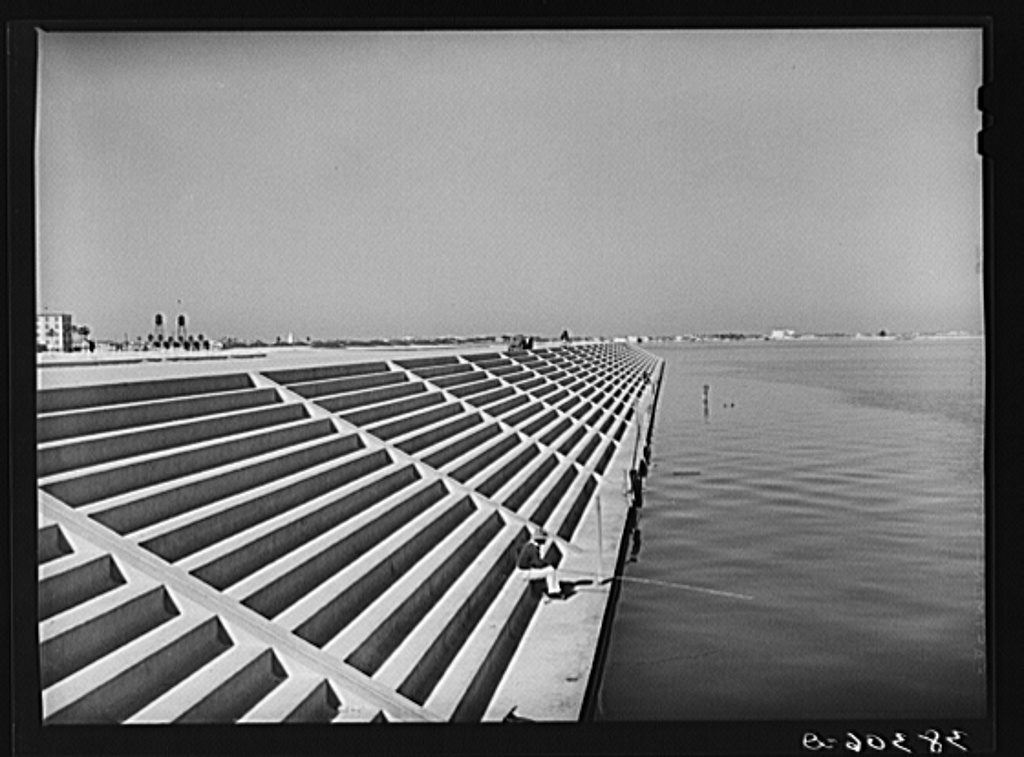
In 1919, a hurricane hit the coast of Texas, just 25 miles south of the growing city of Corpus Christi. As the storm approached from the Gulf of Mexico and the wind picked up, massive schools of fish fled into Corpus Christi Bay. The city’s residents weren’t worried, though: They had made it through a hurricane just three years before with minimal damage, and they believed the barrier islands that guarded the city then would protect them again.
This hurricane, though, hit harder. Corpus Christi fell in the quadrant of the storm with the fiercest winds and the greatest risk of flooding. The surge rushed in at 16 feet high, destroying the lower-lying parts of the city. Hundreds died.
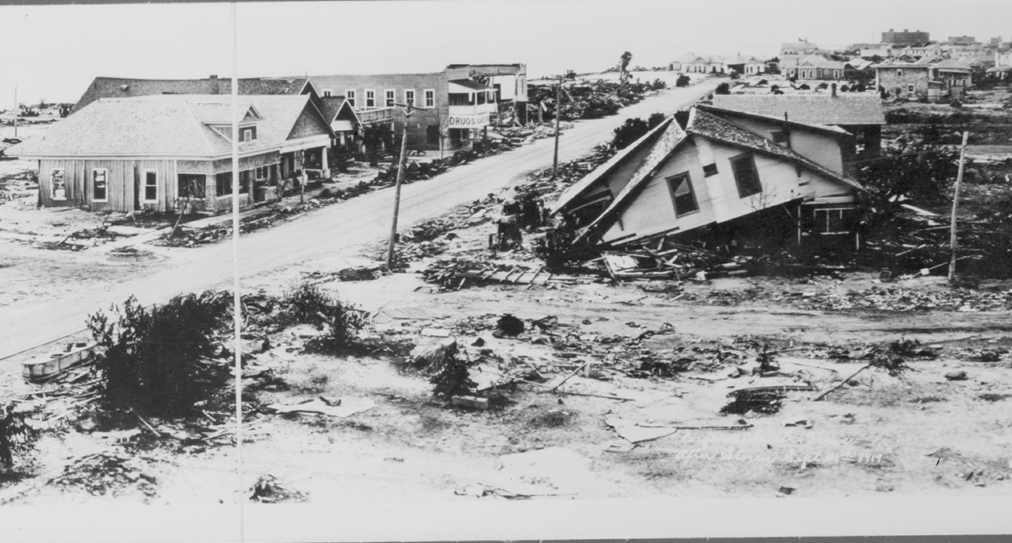
Two decades before, after being hit by a similar storm, Galveston had built a seawall, and now the reeling residents of Corpus Christi began to demand one of their own. In the 1910s, the residential section of the city sat on a bluff, about 50 feet higher than the beach, but the city’s business section sat below, just a few feet above sea level. “If you’re so close to the water, you need protection,” says Mary Jo O’Rear, author of Bulwark Against the Bay, an account of the city’s quest to build a seawall. In the aftermath of the 1919 storm, city leaders presented the first proposal for a seawall, which would have stood 14 feet above sea level.
But that wall was never built. It would be more than 20 years before Corpus Christi had that storm protection. While politicians shifted their ambitions to other infrastructure projects—a port, a dam, canals—citizens recruited their own designer, Gutzon Borglum, the sculptor responsible for Mount Rushmore, who imagined the Corpus Christi seawall less as practical, protective measure than as an opportunity to beautify the city.
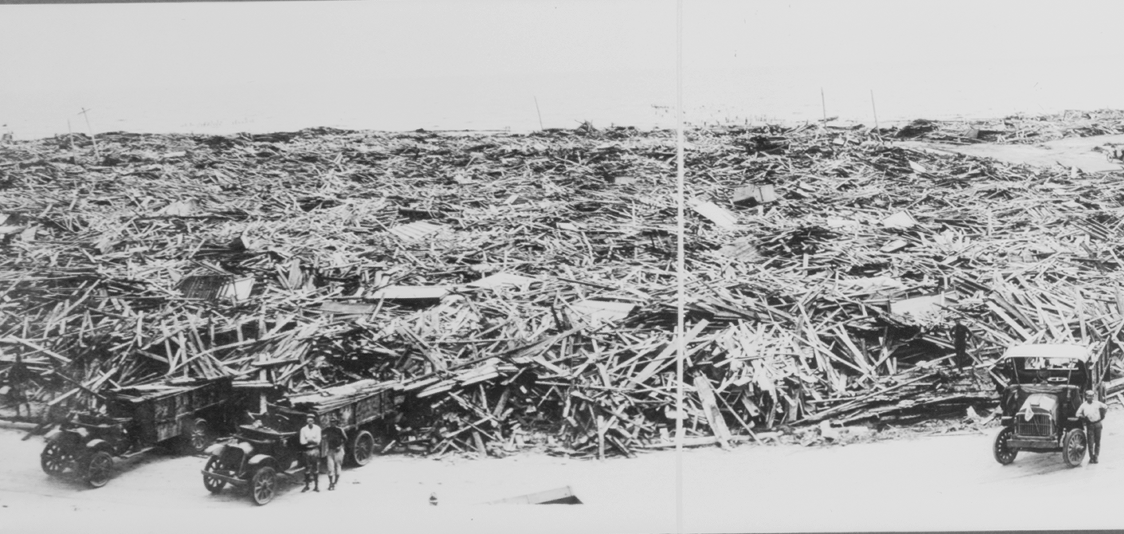
In 1927, when Borglum first came to Corpus Christi, both his fame and infamy were growing. The Idaho-born sculptor had won awards and commissions, including, most prominently, the job of creating a sculpture of Union General Philip Sheridan for Washington, D.C., and the Metropolitan Museum of Art in New York had acquired one of his sculptures, an unprecedented honor for an American artist. But in 1923, he had also started worked on a giant image of Confederate leaders, to be sculpted into the side of Stone Mountain, Georgia. The Daughters of the Confederacy were primary funders of that work, but the group that actually commissioned it also had deep ties to the Ku Klux Klan. The project did not go well, and Borglum left, but not before his own ties and sympathies with the Klan had been exposed.
After that he found himself in Texas, working on a new monument commission. In Corpus Christi, where he had come to give a talk to local business owners, he was treated as a possible savior. Margaret Lorine Spoonts, the pioneering head of the city’s Chamber of Commerce, took him to see the city’s bay, and he was enamored, O’Rear writes in her book. In his own words, “the little city nestling along the shore of the beautiful bay, with the breeze coming in from the Mexican Gulf behind,” had charmed him, and he immediately started imagining how to improve upon it, “with parkways, esplanade and playgrounds rimming the bay … and [a] boulevard running along the entire front of the city eventually continuing on to the Gulf.” As his plan grew, it came to encompass a series of statues commemorating Texas history and a towering statue of Christ, in honor of the city’s name, out in the bay.
There was no money to pay him, Spoonts told him, but he didn’t seem to care. For years to come, Borglum developed and advocated for his vision of a beautiful seawall running along the city’s coast.

In the following months, Borglum traveled the country, telling every reporter he met, it seemed, about his plans for Corpus Christi. By 1928, he was ready to pitch his vision to the city. He had drawn a map and made a 175-foot plaster model that he presented at the city’s Nueces Hotel. Like the Galveston seawall, his was a vertical wall; it would hug the shore, then fan out into an esplanade, with a walkway, lovely landscapes, and trees, before turning back to the coast. “His was more of a beauty thing, and he admitted it in one of his interviews,” says O’Rear. “This isn’t much for protection; it’s for beauty. It would have been beautiful.”
But it would not, O’Rear explains in the book, have been particularly practical. In his map and model, Borglum left out key features of the city, including the Municipal Pier, which served the city’s businesses. He also had little interest in the engineering behind a seawall that could withstand another dangerous storm.

Borglum’s seawall would also be expensive, at $1.25 million (nearly $18 million today, adjusting for inflation). The city would need to issue a bond to raise the money and, according to Texas law at the time, it would have to go to a public vote. The bond election was scheduled for October 1928. Led by Spoonts and other business leaders, the city started to rally around the proposal. Much to the surprise of the city’s political class, says O’Rear, “it actually looked like it was going to win.”
Then the city’s mayor canceled the vote.
“He had his sights set on building a dam,” says O’Rear. Even though Borglum had promised to donate the giant statue of Christ, the rest of his vision would still be costly. “I thought the cancellation of that bond election really affected the populace,” says O’Rear. “They were really excited, and we don’t get a lot of excitement in Corpus, we just don’t. I think it hurt people and angered them when the bond election got canceled.”
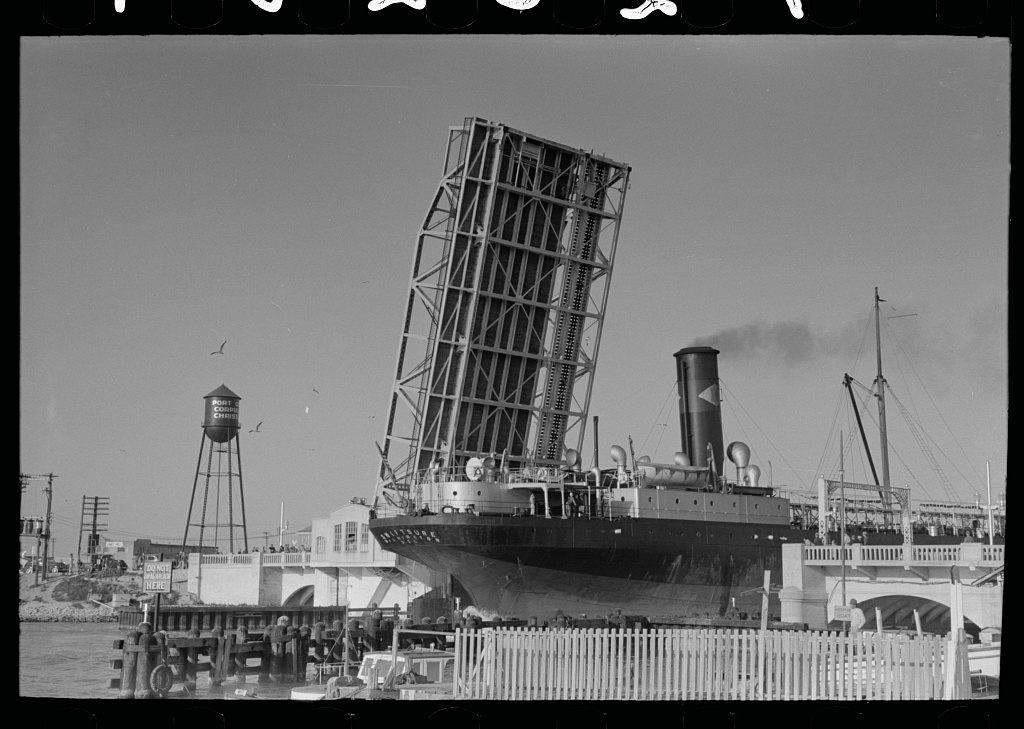
For years, Borglum kept pushing his vision for Corpus Christi Bay, but when the seawall finally did get built, it was the vision of engineers, not an artist, that prevailed. By the late 1930s, Corpus Christi had become a bustling port and refinery city, and those resources still needed protection from the threat of storms. The mayor at the time, A.C. McCaughan, made a seawall a priority. That time, though, the plans proceeded quietly, with little boosterism or fanfare, and they came from the engineering firm of Edward Noyes and E.L. Myers.
Noyes and Myers had little interest in sculptures or Texas history. They were more practical-minded, but they did care about good design. Before creating their proposal, they toured the Gulf Coast to understand the seawalls that had already been built. What they came up with, though, was unique to Corpus Christi.

At the time, seawalls were made of vertical, concreted steel sheets to keep water at bay. Borglum’s actual wall would have been a similar barrier, but Noyes and Myers had a different idea. Instead of a vertical front, they proposed a graduated front—a set of concrete steps, each a foot deep and almost two feet wide. This would actually give the wall more strength to bear the force of waves. The seawall itself was 25 feet wide, with its top at an elevation of 14 feet; the engineers’ design also extended the city’s coast towards the water, creating enough room for a road to pass along the bay, and included boat basins for sailors. Construction began in 1939, and by 1940, 21 years after 1919’s destructive storm, Corpus Christi finally had its seawall.
The step design had an added benefit, too. “It was a brilliant move,” says O’Rear, “because what it did was create an arena where people can come and sit on the steps. They can watch boat races; we’ve had replicas of the Niña, Pinta, and Santa Maria in the bay. You can go in the morning, and people are jogging on the seawall, they’re coming out to look at the water.” The practical engineers had created a public space that people actually want to use.
In the decades that followed, the seawall helped protect the city as storms passed through. But it has limitations. It doesn’t extend to the slim peninsula just north of the city’s downtown, an area called North Beach, for instance. “That gets flooded every time,” says O’Rear. “It’s right there at sea level. They’ve got condominiums, they’ve got wonderful restaurants, they have hotels there, and it’s wide open. I have no idea what’s going to be going on there right now.” Almost a century after the 1919 storm inspired the city to seek more protection, another hurricane is battering the Gulf Coast. Even with a seawall, Corpus Christi still seems vulnerable.

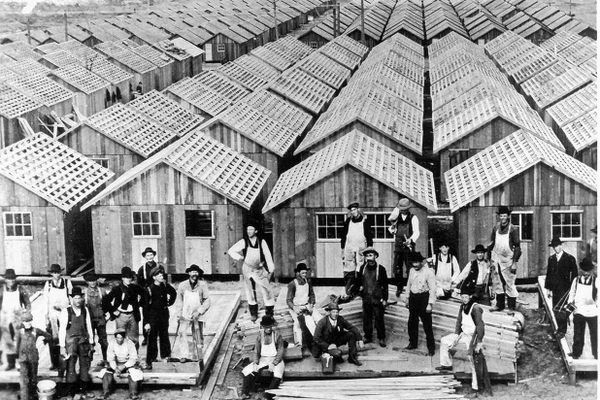

















Follow us on Twitter to get the latest on the world's hidden wonders.
Like us on Facebook to get the latest on the world's hidden wonders.
Follow us on Twitter Like us on Facebook